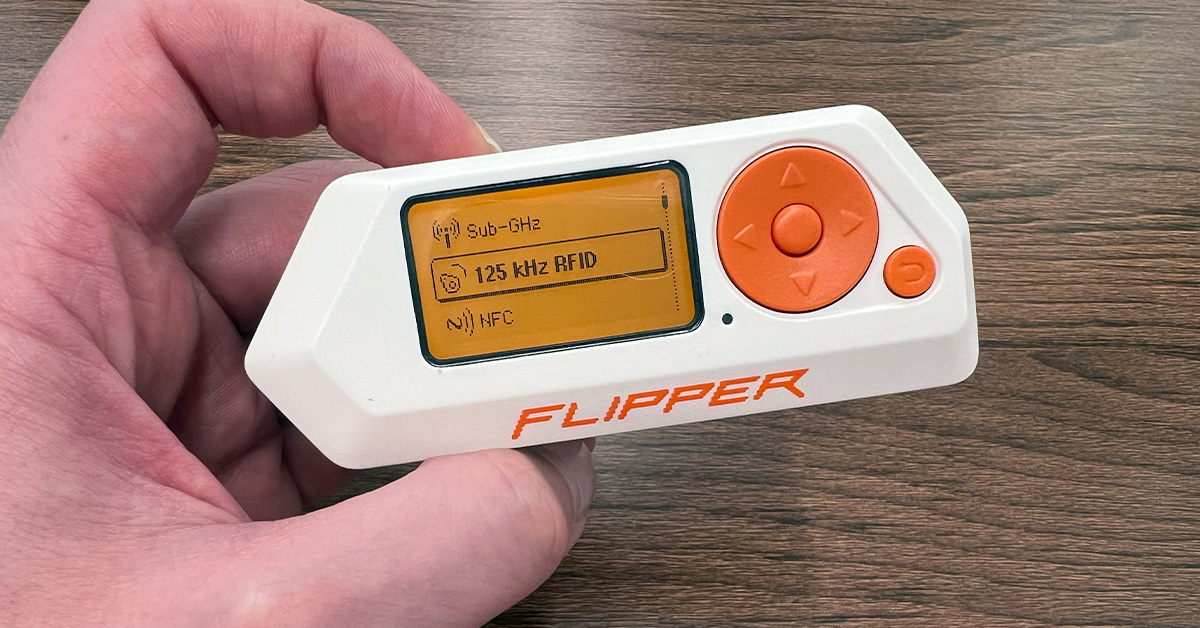If you’ve ever tapped a plastic PROX card against a wall-mounted reader to enter an office, campus, or secure facility, you’ve used proximity card technology. For decades, PROX (short for “proximity”) cards have been a go-to choice in RFID access control. They were simple, reliable, and, at the time, a leap forward from metal keys.
But technology doesn’t stand still. What was once cutting-edge is now an open target for cloning devices like the Flipper Zero, making it vital to understand how PROX came to dominate and why it’s now time to move on.
The Beginning: From Keys to Contactless Access
In the late 1970s and early 1980s, access control systems moved beyond mechanical locks. Companies like HID Global introduced low-frequency (125 kHz) proximity cards, which allowed a cardholder to simply hold or tap a badge near a reader to gain entry.
The magic was in the passive RFID chip inside the card. These chips drew power from the electromagnetic field of the reader and sent back a unique sequence number. When that number matched the system database, the door unlocked. No batteries, no swiping—just present the card.
The Rise of the PROX Card: 1990s to 2000s
By the 1990s and early 2000s, HID ProxCard and similar credentials were everywhere. Schools, hospitals, corporate offices, and government buildings adopted them for:
- Convenience — quick, tap-and-go access.
- Scalability — easy to add or remove users.
- Durability — long-lasting physical cards.
The ProxCard II became an industry standard, cementing PROX technology as the go-to in access control.
The Hidden Flaw: No Encryption
The same simplicity that fueled PROX adoption became its biggest weakness. Each card’s facility code and card number are transmitted in plain, unencrypted form. That means:
- Any RFID reader can capture the signal.
- The data can be cloned to a new card.
- The system can’t tell the real card from the duplicate.
For years, exploiting this vulnerability required expensive, specialized equipment, but that’s no longer the case.
The Game-Changer: Flipper Zero and Cheap Cloning Tools
Starting in the 2010s, handheld RFID cloners became widely available online. Devices that once cost thousands now sell for under $50.
The most famous example? The Flipper Zero, a pocket-sized, open-source hacking tool that can read, store, and emulate PROX cards in seconds. What used to require advanced skills is now possible for hobbyists, or criminals, with minimal effort.
PROX in 2025: Still Common, Still Vulnerable
Today, PROX cards remain in use at millions of facilities. They still work as intended, but that’s the problem. They rely on outdated technology that modern tools can bypass with ease. Sticking with PROX in 2025 is like locking your front door but leaving the key under the welcome mat.
Beyond PROX: Secure Credential Upgrades
Modern replacements for PROX technology like HID iCLASS SE, MIFARE DESFire EV3, and Seos use encryption, mutual authentication, and advanced security protocols. They make cloning exponentially harder.
If you’re still using PROX cards, upgrading to a secure RFID access control system is no longer optional—it’s essential.
Pro tip: Not sure what type of cards your facility uses? Schedule a free access control audit with our experts. We’ll identify your credentials, assess the risk, and recommend secure upgrade paths.
For more information, navigate to our landing page: Your PROX Card is Already Compromised





